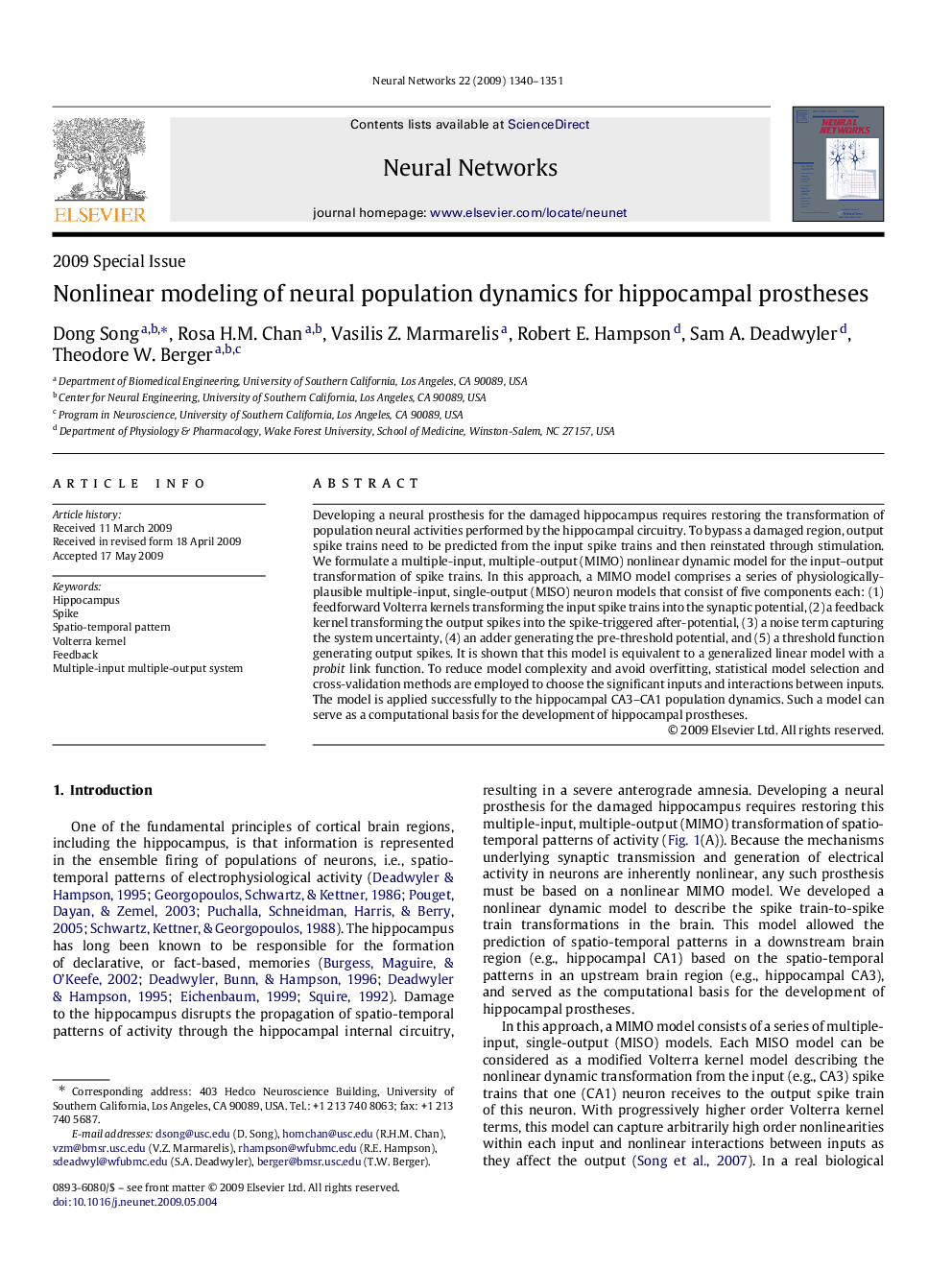| Article ID | Journal | Published Year | Pages | File Type |
|---|---|---|---|---|
| 405605 | Neural Networks | 2009 | 12 Pages |
Developing a neural prosthesis for the damaged hippocampus requires restoring the transformation of population neural activities performed by the hippocampal circuitry. To bypass a damaged region, output spike trains need to be predicted from the input spike trains and then reinstated through stimulation. We formulate a multiple-input, multiple-output (MIMO) nonlinear dynamic model for the input–output transformation of spike trains. In this approach, a MIMO model comprises a series of physiologically-plausible multiple-input, single-output (MISO) neuron models that consist of five components each: (1) feedforward Volterra kernels transforming the input spike trains into the synaptic potential, (2) a feedback kernel transforming the output spikes into the spike-triggered after-potential, (3) a noise term capturing the system uncertainty, (4) an adder generating the pre-threshold potential, and (5) a threshold function generating output spikes. It is shown that this model is equivalent to a generalized linear model with a probit link function. To reduce model complexity and avoid overfitting, statistical model selection and cross-validation methods are employed to choose the significant inputs and interactions between inputs. The model is applied successfully to the hippocampal CA3–CA1 population dynamics. Such a model can serve as a computational basis for the development of hippocampal prostheses.
